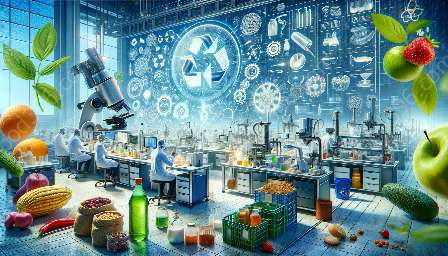Food allergies and intolerances have become a major concern in the modern world, impacting millions of individuals. This topic cluster focuses on common food allergens, their impact on people with food allergies or intolerances, and the role of food science and technology in understanding and managing them.
The Basics of Food Allergens and Intolerances
Food allergens are specific proteins in food that trigger an abnormal immune response in certain individuals. When these individuals consume the allergenic food, their immune system mistakenly identifies the proteins as harmful invaders, leading to an allergic reaction. On the other hand, food intolerances involve a negative reaction to a particular food or ingredient that does not involve the immune system, such as lactose intolerance or sensitivity to food additives.
Common Food Allergens
Several foods are known to be common allergens, with some being more prevalent than others. These include:
- Milk: Dairy products are a common source of allergens, particularly in young children.
- Eggs: Both the egg white and yolk can trigger allergic reactions.
- Wheat: Gluten, a protein found in wheat, can cause allergic responses in some individuals.
- Soy: Soybeans and soy products are known allergens.
- Peanuts: Peanut allergies are one of the most common and severe food allergies.
- Tree nuts: These include almonds, cashews, walnuts, and others, and can elicit allergic reactions.
- Fish and shellfish: Allergies to seafood are widespread and can be severe.
- Food Additives: Certain additives, such as sulfites and food colorings, may trigger intolerances in some individuals.
Understanding Food Allergy and Intolerance
Living with food allergies or intolerances can significantly impact an individual's quality of life. It can lead to restrictive dietary practices, social challenges, and the constant need to remain vigilant about food choices. Managing these conditions involves strict avoidance of allergens or offending food components, which requires a deep understanding of food labels and potential cross-contamination issues.
Food Science and Technology's Role
Advancements in food science and technology play a pivotal role in managing food allergies and intolerances. From allergen detection methods to the development of hypoallergenic food products, research and innovation in this field are essential in providing safe and nutritious food options for individuals with dietary restrictions. Labeling laws and regulations have also improved, making it easier for consumers to identify potential allergens in packaged foods.
Preventing and Managing Food Allergens
Given the potential severity of allergic reactions, prevention is key. This includes education on allergen awareness, improved labeling practices, and the development of allergen-free production facilities. Additionally, research into food processing techniques that can reduce allergenic potential while maintaining nutritional value is ongoing, offering hope for individuals with food allergies.
Conclusion
Understanding common food allergens, their impact on individuals with food allergies or intolerances, and the role of food science and technology in managing and preventing them is essential in promoting a safe and inclusive food environment. By staying informed and supporting advancements in this field, we can create a more accommodating and healthy dining experience for everyone.

